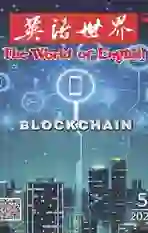2019年11月CATTI三级笔译实务真题(英译汉)
2020-06-24韩子满
韩子满
passage 1
[1] In todays interconnected world, cultures power to transform societies is clear. Its diverse manifestations—from our cherished historic monuments and museums to traditional practices and contemporary art forms1—enrich our everyday lives in countless ways. Heritage constitutes a source of identity and cohesion for communities disrupted by bewildering change and economic instability. Creativity contributes to building open, inclusive and pluralistic societies. Both heritage and creativity lay the foundations for vibrant, innovative and prosperous knowledge societies.
[2] Culture is who we are and what shapes our identity. In September 2015 the United Nations General Assembly adopted the sustainable goals. UNESCO ensures that the role of culture is recognized through2 a majority of the Sustainable Development Goals (SDGs), including those focusing on quality education, sustainable cities, the environment, economic growth, sustainable consumption and production patterns, peaceful and inclusive societies, gender equality and food security.
[3] No development can be sustainable without a strong culture component3. Indeed only a human-centered approach to development based on mutual respect and open dialogue among cultures can lead to lasting, inclusive and equitable results. Yet until recently, culture has been missing from the development strategy.
[4] To ensure that culture takes its rightful place in development strategies and processes, UNESCO has adopted an approach: it spearheads worldwide advocacy for culture and development, while engaging with the international community to set clear policies and legal frameworks and working on the ground to support governments and local stakeholders to safeguard heritage, strengthen creative industries and encourage cultural pluralism.
[5] Today, creativity is emerging as one of the most promising ways for changing how we see cities. Whether by revitalizing the local economy, rethinking transport or housing policies, reclaiming urban spaces, or opening up new horizons for young people, creativity is one of the driving forces behind urban policies and initiatives. Cities worldwide are focusing their attention on the cultural and creative industries as an inspiration4 for their future. This vision is promoted by elected representatives and city policy-makers, who see it as a strategic lever for innovation when it comes to tackling contemporary urban issues, whether on an economic, social or environmental front. More importantly, however, it is a vision shared by professionals and citizens, who are taking action in their own neighborhoods and communities to build more sustainable and more human cities.
[6] This vision of creative urban governance is the driving force behind the UNESCO Creative Cities Programme and Network. Since its creation in 2004, the Network has established itself as a strategic platform for promoting and sharing this new approach to sustainable cities. Through its standard-setting and operational actions, UNESCO has paved the way for5 demonstrating the essential role of creativity in urban sustainability, assisting national and local authorities and advocating this vision at an international level.
[7] Culture and creativity play a key role in sustainable urban development. They contribute to diversifying the economy and generating jobs but they also enhance the quality of life of citizens by participating to6 a citys social structure and cultural diversity.
【参考译文】
[1] 当今世界互联互通,文化改造社会的力量显而易见。文化的表现多种多样,既可能是我们倍加珍惜的具有历史意义的纪念碑和博物馆,也可能是传统习俗及当代艺术形式,都以多种方式丰富了我们的日常生活。对于因为令人困惑的变化和经济不稳定而陷入混乱的社群来说,文化遗产是身份和凝聚力的源泉,创意则助力建设一个开放、包容、多元的社会。文化遗产和创意都为充满活力、创新不断、兴旺发达的知识社会奠定了基础。
[2] 文化决定了我们的身份,塑造了我们的身份。2015年9月,联合国大会通过了可持续发展目标。联合国教科文组织确保大多数可持续发展目标都完全认可文化的作用,这些发展目标聚焦高质量教育、可持续发展城市、环境、经济增长、可持续的消费及生产模式、和平包容的社会、性别平等和食品安全问题。
[3] 如果不重视文化,任何发展都不可能持续。事实上,发展只有以人为中心建立在文化间互相尊重和公开对话基础之上,才可能带来持久、包容且公正的结果。可是直到最近,文化在发展战略中都一直缺席。
[4] 为了确保文化在发展战略和发展过程中都占据一个合理的位置,联合国教科文组织采取了这样的措施:在全世界率先提倡文化与发展,同时与国际社会密切联系以设立明确的政策与法律框架,实地工作以支持各国政府和当地利益相关方保护文化遗产、强化创意产业并鼓励文化多元化。
[5] 今天,创意正成为一种最具潜力的手段,改变我们对城市的看法。不论是重振当地经济、重新审视交通和住房政策、重新利用都市空间,还是为年轻人开阔新的视野,创意都是都市政策和都市倡议的推动力之一。世界各地的城市都将目光投向文化和创意产业,鼓舞他们面向未来。当选代表和城市的决策者们纷纷推动这一愿景,将之视为应对当代城市经济、社会或环境问题的创新战略手段。不过,更加重要的是,这一愿景得到了专业人士和市民的支持,他们在自己的街区和社群采取行动,让城市更加可持续、更加人性化。
[6] 正是有了这种创意城市管理的愿景,联合国教科文组织推出了“创意城市网络计划”。“创意城市网络”自2004年推出以来,已被打造为推动并共享这种可持续城市建设方法的战略平台。通过制定标准和实际行动,教科文组织创造了便利条件,以展示创意在城市可持续发展中的关键作用,协助各国政府及地方当局,并在国际层面上倡导这种愿景。
[7] 文化與创意在可持续城市发展中起了关键作用,有助于使经济多元化、创造工作岗位,而且由于参与城市的社会组织和文化多元化进程,提升了市民的生活质量。
【译评】
1. 这里的“from A to B”结构表示一个范围,极言其多,如果按照字面翻译为“从A到B”,句子结构会比较臃肿,不好组织。通常的译法是单独说A和B,然后加上“内容丰富”“包罗万象”“多种多样”等字眼,即译文中采取列举加描述的方式把原文范围的意思表达出来。
2. through在这里的意思相当于over the entire extent。这些可持续发展目标在方方面面都注重文化,译为“完全”。这个词的常见意思是by means of,可译为“通过”“凭借”等,如果这么译的话,似乎是说联合国教科文组织以这些目标为手段,来让他人承认文化的作用,但这些目标自身是否重视文化却不得而知。这与全文的内容有些抵触。
3. component这里就是a constituent part、ingredient,也就是“成分”的意思,strong culture component字面意思是文化是重要成分,占的比重大。但这么译句子会比较别扭。
4. inspiration这里就是“鼓舞”“灵感”的意思,这里为了方便组织句子,需要译为动词。
5.这里pave the way for的宾语太长、太复杂,如果翻译为“为……创造条件”或“为……铺平道路”,句子结构会非常生硬,变通一下,将宾语在句尾罗列出来,句子就自然了。
6. participate to其实就是participate in的意思,简单翻译为“参与……组织”及“参与……多元化”不符合汉语习惯,所以在句尾加上“进程”一词。 □
